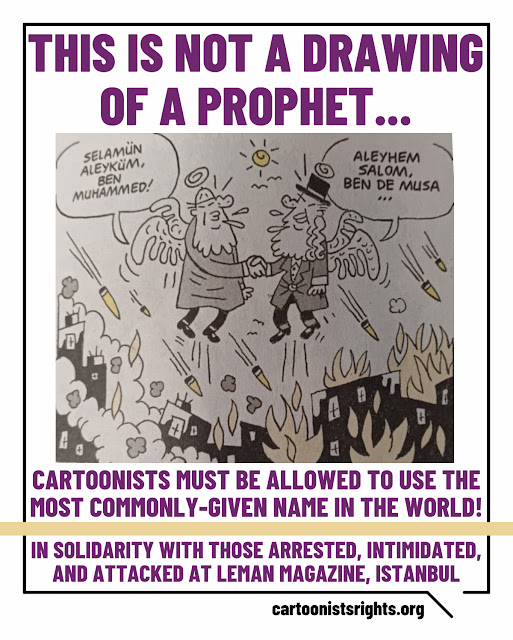From Cartoonists Rights International.
The undersigned are appalled by the victimization of staff at
LeMan humor magazine, Istanbul in recent days, following the publication June 26th of a cartoon strip by
Doğan Pehlevan, the content, meaning, and intent of which has been distorted by government officials in Turkey, leading to inaccurate media coverage and misguided public outrage and, ultimately, four jailed on multiple charges, two more colleagues wanted by police, and the entire entity under investigation for accepting foreign influence.
- Association of Canadian Cartoonists / L’Association de caricaturistes Canadien
- Daryl Cagle – Cagle Cartoons, Inc. (Newspaper Syndicate)
- Cartoon Movement
- Cartooning for Peace
- Cartoonists Rights
- Columbia Global Freedom of Expression
- European Cartoon Award
- Forum for Humour and the Law (ForHum)
- Freedom Cartoonists Foundation
- Caoilfhionn Gallagher KC Strategy
- Professional Cartoonists’ Organisation (PCO)
- ToonsMag







